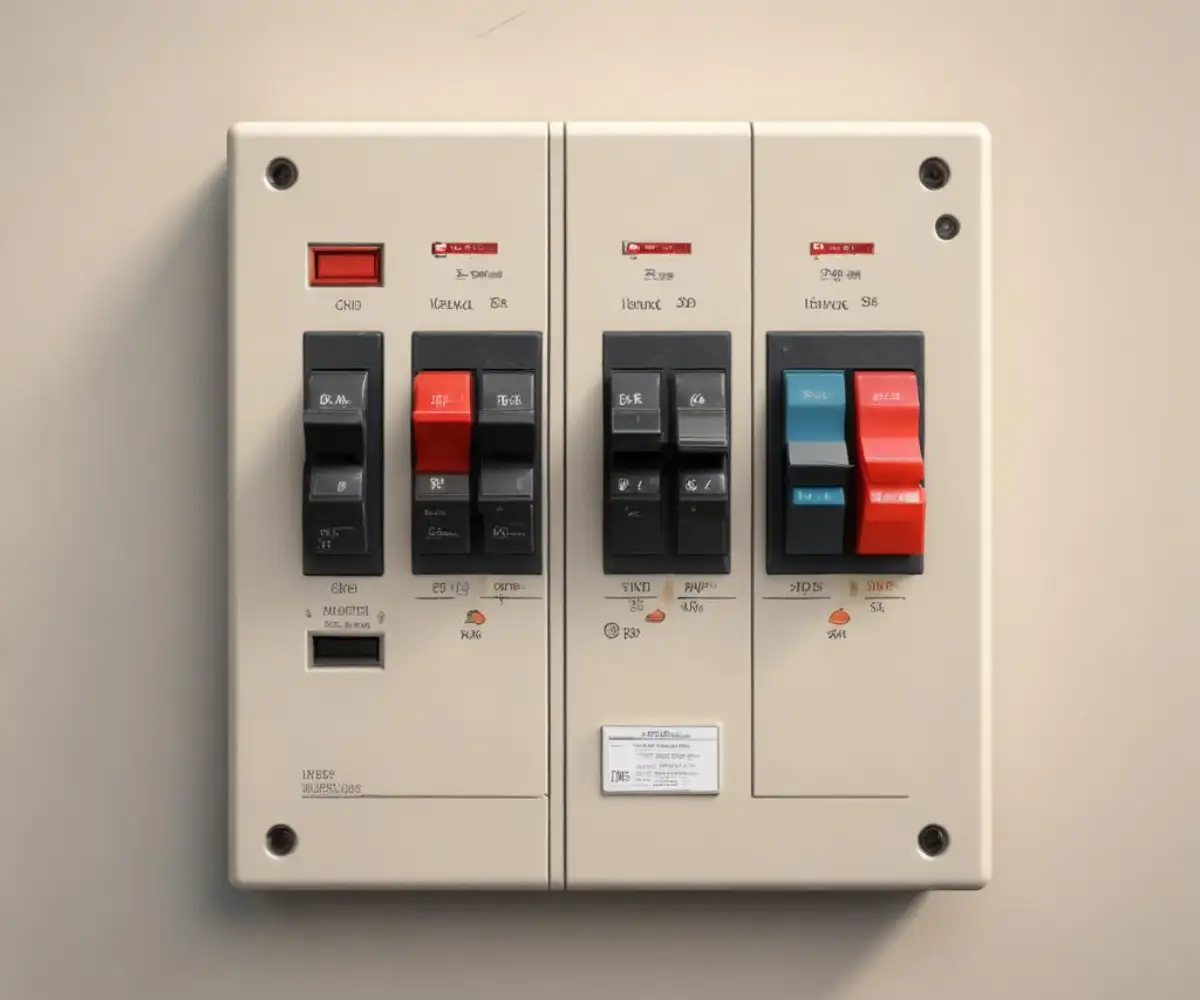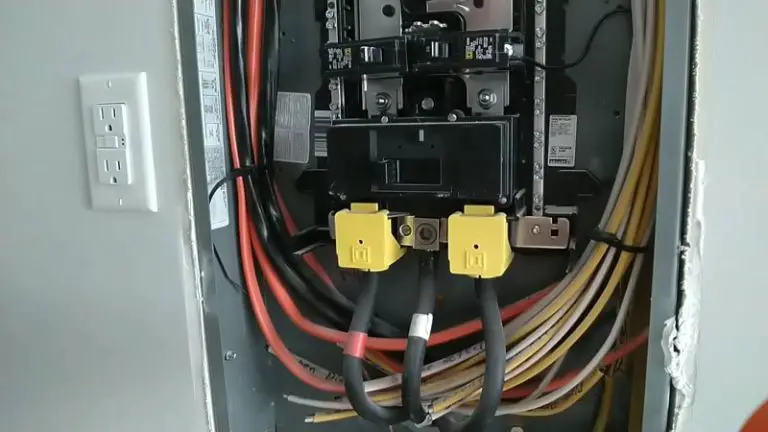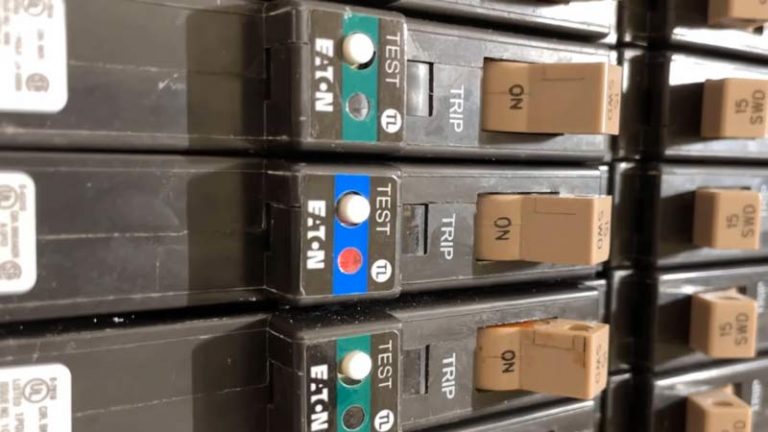High-Pitched Noise in Apartment? Find the Annoying Source NOW
That incessant, high-pitched noise in your apartment can feel like a form of torture. It’s the kind of sound that drills into your skull, making it impossible to relax, focus, or sleep. In an apartment, the mystery is even more maddening due to shared walls, vents, and utilities; the culprit might not even be inside your unit.
This guide provides a systematic approach to hunting down that maddening whine, squeal, or buzz. We’ll explore the common sources, from the electrical grid in your walls to the plumbing you can’t see, and give you actionable steps to restore peace and quiet to your home.
You'll Learn About
Unmasking the Whine: Common Electrical Culprits
Your apartment’s electrical system is a primary suspect for high-frequency sounds. These components are everywhere, often operating silently, but a small fault can turn them into a source of constant annoyance.
Dimmer Switches and Light Fixtures
One of the most frequent offenders is a dimmer switch. Many older dimmers use technology that can produce a distinct buzzing or humming sound, especially when paired with incompatible light bulbs. Using non-dimmable LED or CFL bulbs on a dimmer circuit is a recipe for noise.
Beyond dimmers, fluorescent light ballasts are notorious for emitting high-pitched whines as they age. Similarly, loose connections within any light fixture or outlet can sometimes create audible electrical arcing, which is both noisy and a potential fire hazard.
Electronics and Power Adapters
Look around your apartment at the sheer number of devices plugged into the walls. Nearly every one of them has a small transformer or switching power supply, often housed in the bulky plug itself (a “wall wart”). These components can vibrate at a high frequency, creating an audible pitch that many people find irritating.
Common sources include laptop chargers, TV power supplies, Wi-Fi routers, and smart home devices. As these components age or if they are cheaply made, they are more likely to become noisy.
The Circuit Breaker Panel
Go to your circuit breaker panel and listen closely. A faint hum can be normal, but a loud, persistent buzzing or high-pitched noise is a serious red flag. A noisy breaker could signal an overloaded circuit or a breaker that is failing and needs immediate replacement.
If you suspect the noise is coming from your breaker box, do not attempt to fix it yourself. This is a job for a qualified electrician, as working inside a panel is extremely dangerous.
When Appliances Start Squealing
Modern apartments are filled with appliances, each with its own motors, fans, and electronic controls. When parts begin to wear out, they often announce their decline with a high-pitched sound.
HVAC Systems and Vents
Your heating, ventilation, and air conditioning (HVAC) system can produce a variety of noises. A high-pitched squeal could be a worn-out belt on the blower motor or failing motor bearings. In an apartment, the main unit might be on the roof or in a utility closet, with the sound traveling through the ductwork.
Sometimes, the issue is simpler. High-velocity air moving through a partially closed or obstructed vent can create a whistling sound. Check that all your vents are fully open and clear of furniture or other blockages.

Kitchen and Laundry Appliances
Your refrigerator is a complex machine that can produce high-pitched noises from its compressor, condenser fan, or evaporator fan. Likewise, a dishwasher might emit a squeal from a faulty water inlet valve or a failing motor. You might want to explore if your dishwasher switch is not working properly as part of your troubleshooting.
Smoke detectors and carbon monoxide alarms are designed to get your attention. While everyone knows the intermittent chirp of a low battery, a failing unit can sometimes produce a more constant, high-pitched tone as its internal electronics die.
The Sneaky Sounds of Plumbing
Water systems can be surprisingly noisy. High-pitched sounds from your plumbing often indicate an issue with water pressure or worn-out components within your fixtures.
High Water Pressure
Water moving too quickly through your pipes can cause a whistling or singing sound. This is especially common in large apartment buildings where pressure needs to be high to serve upper floors. A failing pressure-reducing valve for your unit or the entire building could be the cause.
This kind of noise is often most noticeable when a toilet is refilling or a shower is running. It’s a persistent sound that can seem to emanate from within the walls themselves.
Worn Fixtures: Toilets and Faucets
The internal components of toilets and faucets wear out over time. A classic culprit is the fill valve in a toilet tank. As the seal degrades, it can cause a high-pitched squeal as the tank refills after a flush.
Similarly, old washers and gaskets inside sink or shower faucets can vibrate as water flows past them, creating a piercing noise. This is often an easy and inexpensive fix for a plumber or your building’s maintenance staff.
A Systematic Guide to Locating the Noise
Finding the source of a high-pitched sound can be difficult because the human ear struggles to pinpoint the direction of high frequencies. The sound can seem to come from everywhere at once. A methodical process of elimination is your best strategy.
Step 1: The Breaker Box Test
Your first and most powerful tool is the circuit breaker panel. Go to your panel and shut off the breakers one by one. After you flip a breaker, wait a minute to see if the noise stops.
If the sound disappears, you have successfully isolated the problem to that specific circuit. You can then identify all the outlets and fixtures on that circuit and test them individually to find the single device causing the issue. If the noise persists with all breakers off, it’s not coming from your electrical devices.
Step 2: The Appliance and Electronics Sweep
If the breaker test doesn’t work, the sound may be from a battery-powered device or coming from outside your apartment’s electrical system. Unplug every electronic device from the wall, one at a time. Pay close attention to small power adapters.
Also, check for any forgotten devices. A common source of mystery beeps is a smoke detector that was taken down and placed in a drawer, its battery slowly dying.
Step 3: Listen to Your Plumbing
Pay attention to when the noise occurs. Does it only happen when water is running? Try flushing each toilet and running each faucet one by one to see if you can trigger the sound. If you can, the issue is almost certainly a worn valve or gasket in that specific fixture.
Some plumbing noises are intermittent and not tied to active water use. A failing toilet fill valve, for instance, might create a brief squeal every so often as it lets a small amount of water into the tank. This is often the cause of that mysterious high-pitched noise that happens every 10 minutes.
Step 4: Investigate Structural and External Sources
In an apartment, the sound may not be yours to fix. It could be coming from a neighboring unit, a common area, or a building-wide system. Listen closely at shared walls and ceilings. Sometimes the noise is more apparent when you press your ear to the surface, as discussed in our guide to high-pitched noises from the ceiling.
Don’t hesitate to involve your building manager. They are responsible for building-wide systems like elevators, ventilation fans, and fire alarm panels, all of which can be sources of persistent noise.
| Sound Description | Most Likely Source | Recommended Action |
|---|---|---|
| Constant Electrical Buzz/Whine | Dimmer switch, fluorescent light, electronic power adapter, or circuit breaker. | Use the breaker test to isolate the circuit. Unplug devices one by one. Contact an electrician for breaker or wiring issues. |
| Intermittent Chirp or Beep | Smoke/CO detector (low battery or failing unit), old appliance, or forgotten electronic device. | Replace all smoke detector batteries. Search drawers and closets for old devices. |
| Squeal When Water Runs | Worn valve/washer in a specific toilet or faucet, or high overall water pressure. | Isolate which fixture causes the noise. Report it to maintenance for a simple parts replacement. |
| Persistent Whistle from Vents | Air moving through a partially blocked or closed HVAC vent, or a failing blower motor. | Ensure all vents are fully open and unobstructed. If noise persists, report it to building management. |
| Muffled Noise from a Wall | Neighbor’s electronics, building system (elevator, pump), or plumbing within the wall. | Try to confirm the noise with a neighbor. Document the times it occurs and report it to property management. |
Coping and Mitigation in a Shared Space
Finding and fixing the source of a noise in an apartment can take time, especially if it requires cooperation from management or neighbors. In the meantime, the constant sound can severely impact your quality of life. Taking steps to manage your acoustic environment is crucial for your sanity.
The Power of Sound Masking
You can’t always eliminate a noise, but you can often mask it. A white noise machine is an incredibly effective tool for covering up annoying high-frequency sounds. The consistent, broad-spectrum sound of the machine helps your brain ignore the intrusive, specific pitch of the whine.
In a pinch, a simple box fan can achieve a similar effect. The goal is to introduce a pleasant, constant sound that is less jarring than the one you’re trying to ignore.
Renter-Friendly Acoustic Treatments
While you can’t rebuild your walls, you can add soft materials to your apartment to absorb sound. Thick rugs, heavy curtains, and plush furniture all help dampen sound waves, reducing echoes and the overall perceived loudness of a noise.
For more targeted solutions, consider renter-friendly acoustic panels. These fabric-covered foam panels can be hung on walls like pictures and are excellent at absorbing high-frequency sounds. Placing them on a shared wall can help reduce noise coming from a neighbor.
Taking Action and Restoring Quiet
Once you’ve identified the likely source, it’s time to act. For many issues, like a noisy appliance or a faulty light fixture within your unit, the solution is straightforward. However, apartment living often means you need to work with property management to resolve the problem.
When to Call for Help
It’s vital to know when a problem is beyond a simple fix. You should immediately contact a professional or your building management for any of the following:
- Loud buzzing or odd smells from the circuit breaker panel.
- Any noise associated with a gas appliance, which could indicate a dangerous leak.
- Sounds coming from within walls, ceilings, or inaccessible utility closets.
- Problems that persist after you have systematically ruled out all the devices in your own unit.
Communicating with Your Landlord
When you report the issue, be as specific as possible. Document when the noise happens, where it seems loudest, and what it sounds like. If you’ve performed the breaker test or other troubleshooting steps, share that information.
Clear, detailed communication helps maintenance staff diagnose the problem more quickly. It also creates a record of the issue, which is important if the problem is not resolved in a timely manner.
Finding the source of a high-pitched noise in an apartment requires patience and a methodical approach. By working through the possibilities—from your electrical outlets to the building’s core systems—you can zero in on the cause. Don’t let an invisible annoyance disrupt your life; take these steps to reclaim the peace and quiet of your home.


